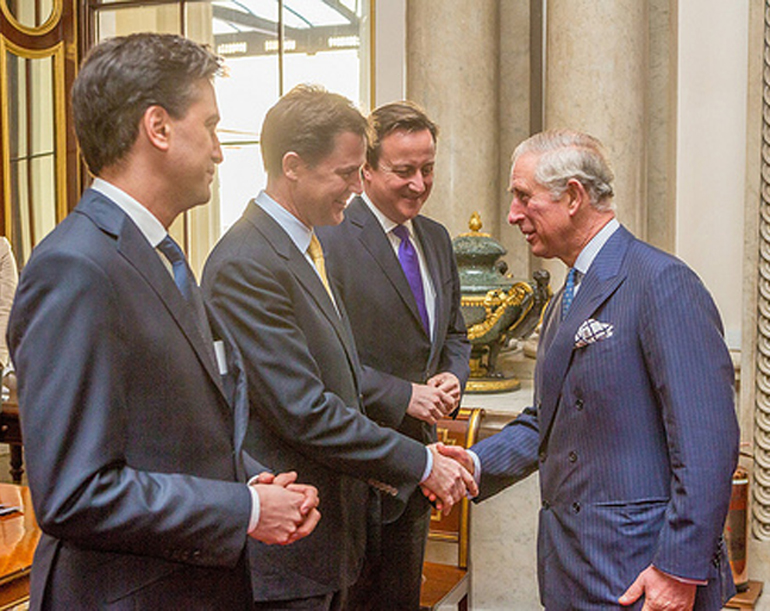The colours associated with Political Parties hold significant meaning, symbolism and history for them, but as with any image trope these colours have evolved and changed over time.
Most recently we have seen the two main political parties; the Conservatives and the Labour Party expand their colours with greens and purples, to update their respective images for today’s electorate. Additionally, new political parties sought to find their own colour to differentiate themselves.
Political Party Colours UK
Below we explain why certain political party colours were adopted in the UK. Read on to see if you agree…..
The Labour Party
Traditionally, the Labour Party is associated with the colour red, as a reflection of ‘The Angry Workers’. This notion was conceived during the first French uprising in 1789 to reflect ‘the blood of the angry workers’ rising up against the bourgeoisie.
Red has long represented a struggle between the lower and upper classes. Indeed, a red flag has been used by revolutionaries since the time of the slave uprisings that were the beginning of the end of the rule of Rome.
Throughout the 19th century, British politics was dominated by the Tory Party and the Liberal Party. In the 1920s, the Liberal vote greatly diminished and the Labour Party became the Conservatives’ main rivals.
When Labour veered towards New Labour in the 1990s the party used purple rather than red as a background colour. In its 1997 election broadcasts as it targeted central ground and Gordon Brown said “purple is the colour of passion”. Perhaps this use of purple was to move away from associations with Red and Communism and Labour and Communism? Red has been associated with the communist movement since the publication of The Communist Manifesto in 1948.
The Conservatives
In recent years, the Conservative Party has been almost always associated with the colour blue and, save for The Republicans in America, many right-wing parties have adopted this hue. However, the story of how it came to be is slightly less interesting than their rivals!
The Conservatives were born out of the Tory Party defined by Robert Peel’s ‘Tamworth Manifesto’ as a new ‘Conservative’ philosophy of reforming ills while conserving the good. Traditionally, the Conservative colours were those of the Union Jack, but when the Labour Party took ownership of the red, the Conservatives were left with the blue. There is a suggestion that the Conservatives “settled on blue to hoover-up Liberal (who previously used blue) votes and build a broad social coalition (presumably against Labour ‘reds’)”. Some have suggested that blue was really chosen because it looks smart, professional and stoic, which could describe the personal style of many a politician. Blue is almost universally known as a steady and trustworthy colour, so this could also have been behind the choice.
The Liberal Democrats
Formed in 1988 from a merger of the Liberal party and the Social Democratic Party, the Liberal Democrats have traditionally adopted orange as their party colour.
The reasons behind this choice are fairly clear cut. There are two main strands of distinct ideology within the party, social liberals and the economic liberals, more commonly known as Orange Bookers. The Orange Book, to which the term refers, discusses the need for a more complete liberalism for the party, more fully supporting the liberalism as a whole including social liberalism.
Choosing the colour Orange, for the Liberal Democrats, illustrates their ideology and the foundation of their political policies.
Colour, therefore, is an incredibly important tool for political parties to portray their ideals and provide the connotations and semantics for their respective images.
Why Green?
During the 2016 election, the colour of ties worn by party leaders was closely examined by the media. David Cameron caused a particular stir when seen wearing a green tie. Helen Venables, director of image consultants House of Colour, says it’s all an act of political camaraderie. “They’ve mixed the colours of the two coalition parties – blue and yellow – and come up with green.”
For Chris Huhne, secretary of state for climate change, “green is obviously a portfolio colour”, his spokesman explains. “The coalition agreement was also written in green.”
Fashion has also played a part. Green ties have become increasingly popular, and brands have had to increase their offering. In 2016, Tie-Rack had to bring in a whole new range – including ties with little green animals. The simple answer seems that politicians are just following a trend.
In more recent times, the colour green, whilst often associated with the Green Party, has been worn by the family members of politicians. During the 2018 Tory Party Conference, a number of wives of prominent Tories all wore green.
There wasn’t a dress code, so why was this the case?
Well, the emotions associated with green could help explain this. Balance, harmony and peace are commonly associated with green. Projecting a calm, measured image, these outfits present a unified family unit.
How perceptions of colour and how the colour associated with political parties may change is yet to be seen, but it is sure to remain an interesting topic for discussion.
We are happy to help you with any colour challenges or answer your questions. Get in touch with us today on +44 (0) 116 284 7790 or at enquiries@verivide.com







